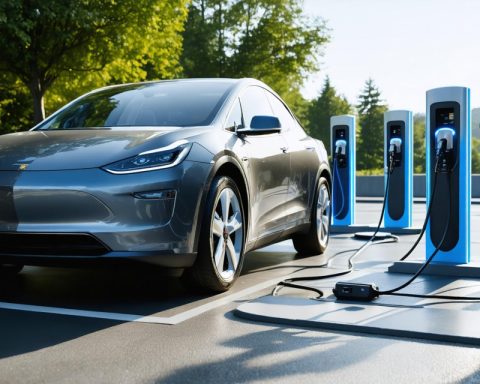- British Columbia’s hydrogen ambitions face setbacks, with seven major projects stalled due to high costs, electricity shortages, and transport complexities.
- Key projects like Fortescue’s Project Coyote and Prince George’s hydrogen initiative have been withdrawn or put on hold.
- Challenges include a lack of domestic hydrogen demand, increased electricity requirements, and transportation risks across sensitive areas.
- Hydrogen is appealing due to its low emissions, aligning with B.C.’s net-zero goals by 2050, but economic and logistical hurdles persist.
- Electricity is a critical requirement, with future demands exceeding 150 megawatts, necessitating policy adjustments.
- Green hydrogen remains costly compared to conventional energies, hindering its financial viability.
- Transportation issues involve risks in converting and moving hydrogen, especially across First Nations lands.
- There’s a call for an energy corridor to connect B.C. innovation with broader markets, but significant challenges remain.
- Critics highlight the gap between ambitious policies and actual implementation, urging careful adaptation and investment.
Far from the limelight of political announcements and hopeful projections, British Columbia’s bold aspiration to become a hydrogen powerhouse faces turbulent headwinds. Recently unearthed documents expose that no fewer than seven grand-scale hydrogen ventures have been stalled or abandoned—shattering the province’s clean energy dreams. The reasons? A mix of high costs, electricity shortages, and transport complexities cast a shadow on hydrogen’s blueprint for a greener future.
Once the flagship enterprise heralded by leaders, Fortescue’s Project Coyote has been noticeably withdrawn from execution. Alongside it, the hopeful Prince George hydrogen initiative, which promised a cleaner future, has been silently hushed into dormancy. As these initiatives falter, the obstacles challenging B.C.’s hydrogen transformation echo with mounting persistence.
Provincial documents highlight the core challenges these projects endure: a striking lack of domestic hydrogen demand, an unanticipated surge in electricity requirements, and the precarious task of transporting volatile substances through sensitive territories. Former energy minister Josie Osborne received a wake-up call in her briefing last fall. The constellation of large-scale hydrogen projects navigating stormy seas wasn’t a vision of hydrogen dominance she cherished.
Hydrogen’s allure—produced from local resources and emitting nearly zero greenhouse gases when used as fuel—resonates deeply with B.C.’s ambition for a net-zero horizon by 2050. Premier David Ebby once embarked on a mission to champion hydrogen production at a Canfor mill, fuelling it with renewable energy optimism. Yet, the melody of triumph turned to silence. The closure of associated facilities stripped the venture of its viability, rendering the dream an indefinite holdout.
Among the pronounced woes, a centerpiece remains electricity—the lifeline for hydrogen production. A burgeoning list penned in March warned of the power-hungry future ahead, pressing for governmental reinvention in policy. As burgeoning industrial ambitions queue up over 150 megawatts in demands, a balancing act unfolds. The navigation between industrial and economic electrification looms large, urging strategies that harmonize innovation with accessibility.
The weight of financial logistics also burdens these hydrogen aspirations. Although incentives flood the market, green hydrogen trudges behind its conventional counterparts in cost-effectiveness. The vision of hydrogen energy cultured within British Columbia’s landscapes struggles against a harsher economic terrain.
Transportation, the artery to hydrogen’s promise, entwines with risk. Transforming hydrogen into ammonia offers a practical path but carries potential peril. Rail transport across First Nations lands intertwines economic promise with historical scars of displacement. Amid complex jurisdictions and legacy issues, dialogues linger on safety and reconciliation, encapsulating the intricate social dimensions entwined with technological advances.
As reality settles in, voices within related industries call for an energy corridor—a beacon for future infrastructure connecting provincial innovation with broader Canadian enterprises. Yet, realigning these ambitions remains a political and societal undertaking of generational breadth.
Critics argue that the provincial excitement for hydrogen doesn’t yet align with groundwork realities. Former environment minister Barry Penner reflects a mirrored sentiment, noting the discrepancy between policy dreams and executional truths.
B.C. stands at a crossroad—still clinging to its hydrogen ambitions. As the province navigates this transformative era, attentive adaptation, dialogue with indigenous communities, and strategic infrastructure investment become pivotal. Only time will unveil whether B.C.’s hydrogen odyssey sails towards fruition or becomes a lesson in overambition. Amidst setbacks, the clarion call for innovation resonates unyielded—a province poised for potential, urging collective action to traverse uncharted energy futures.
Can British Columbia Overcome Its Hydrogen Setbacks to Lead the Green Energy Revolution?
British Columbia has long harbored ambitions of becoming a leader in hydrogen energy, but recent developments have cast doubt over these aspirations. With several high-profile projects delayed or abandoned, the province faces significant challenges that must be addressed if it hopes to maintain its clean energy goals.
Key Challenges Facing B.C.’s Hydrogen Ambitions
1. High Costs and Economic Hurdles: While hydrogen offers a cleaner alternative to fossil fuels, the cost of producing green hydrogen remains significantly higher than conventional methods. This cost challenge is a major barrier to the widespread adoption of hydrogen technology.
2. Electricity Shortages: Hydrogen production is highly energy-intensive, requiring large amounts of electricity. With over 150 megawatts in demand from new industrial projects, B.C. must redefine its energy policies to accommodate these needs without compromising other sectors.
3. Transportation Complexities: Transporting hydrogen safely is both a technological and logistical challenge. Although converting hydrogen to ammonia for transport is a feasible solution, it introduces new safety and environmental risks, particularly when traversing sensitive First Nations territories.
4. Limited Domestic Demand: The current domestic market for hydrogen in B.C. is limited, reducing incentives for large-scale production facilities.
5. Infrastructure Needs: The province’s existing infrastructure is insufficient for a hydrogen economy. Establishing a dedicated energy corridor would be crucial for scaling up production and facilitating distribution.
Potential Solutions and Industry Innovations
Policy Reforms and Incentives: To make green hydrogen more competitive, government incentives can offset costs. Re-evaluating electricity pricing for industrial use and offering tax benefits for hydrogen projects are potential strategies.
Collaborative Infrastructure Development: Engaging with indigenous communities and stakeholders to develop an energy corridor can ensure that infrastructure is built sustainably and inclusively.
Technological Advances: Innovations in hydrogen storage and conversion, such as advancements in fuel cell technologies and electrolyzers, can improve efficiency and reduce costs.
Real-World Use Cases
– Industrial Applications: Industries could use hydrogen as a clean energy source for processes difficult to electrify, such as steel and concrete production.
– Public Transport: Hydrogen-fuelled buses and trains offer a low-emission alternative to diesel-powered public transport systems.
Market Forecasts & Industry Trends
The global hydrogen market is projected to grow significantly over the next decade, with increasing investments in hydrogen infrastructure and technology. Markets in Asia and Europe are expanding rapidly, providing lessons in policy and technological deployment that B.C. could emulate.
Insights & Predictions
While the current landscape may seem challenging, B.C. is well-positioned to pivot and address its hurdles. By placing more emphasis on technological innovation, stronger partnerships with indigenous communities, and robust policy support, the province could reignite its hydrogen aspirations.
Actionable Recommendations
– Strengthen Collaboration: Engaging minimally with First Nations for joint investment ventures and policy formulation can create more effective and culturally respectful energy policies.
– Focus on Infrastructure: Allocating resources to develop a comprehensive energy corridor will be essential for meeting hydrogen transport and distribution needs.
– Boost R&D Investment: Increased funding for hydrogen research and development can accelerate technological breakthroughs that lower production costs.
Conclusion
The journey to becoming a hydrogen powerhouse will require strategic adaptations and collective efforts. Although B.C. faces significant setbacks, with sound policy reform, industry collaboration, and technological innovation, it is not without hope. As the province continues to navigate its energy future, leaning into its strengths and addressing its challenges head-on will be paramount.
For more information on innovations in renewable energy, visit the official British Columbia government website.















